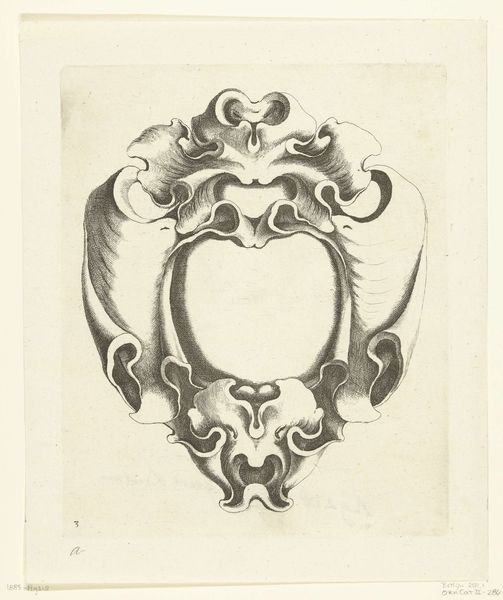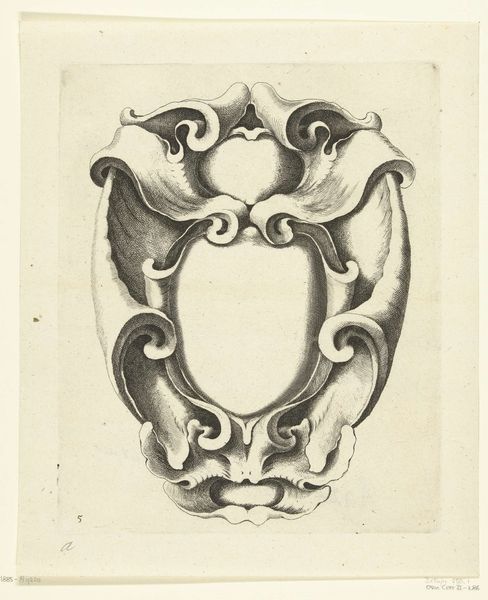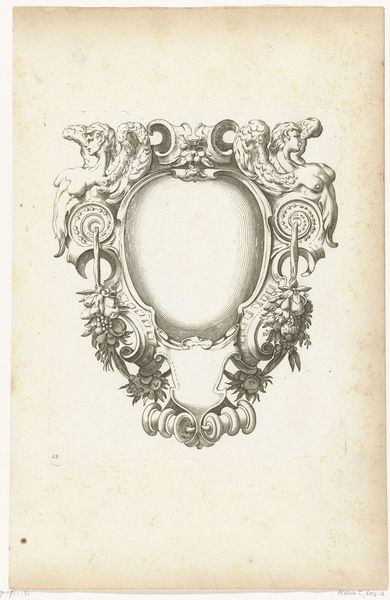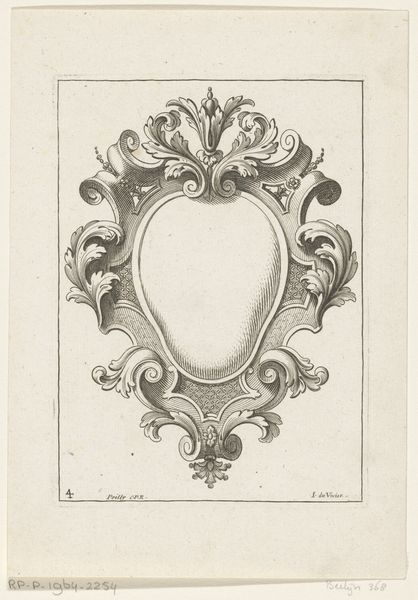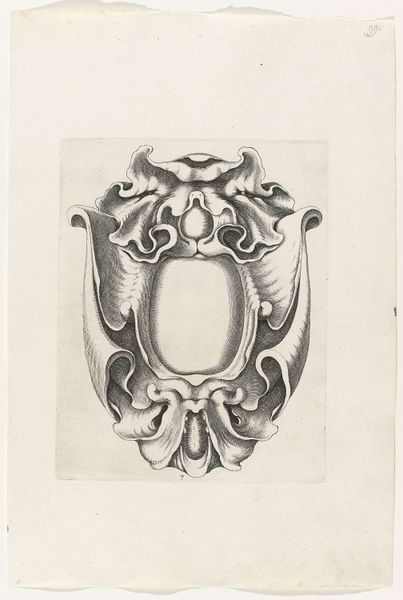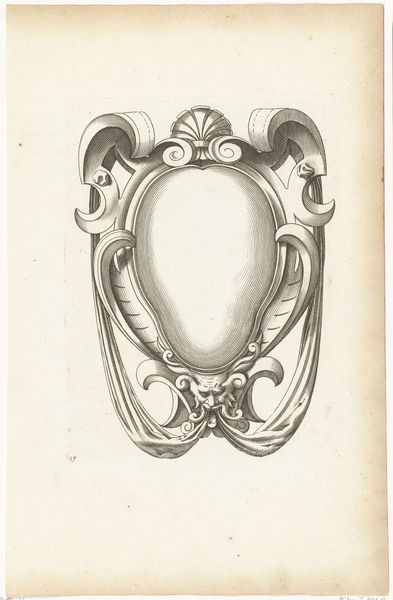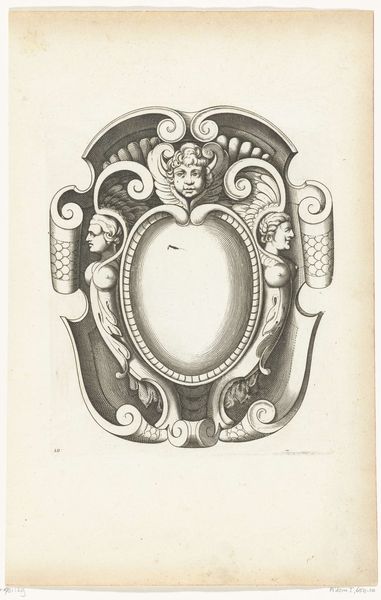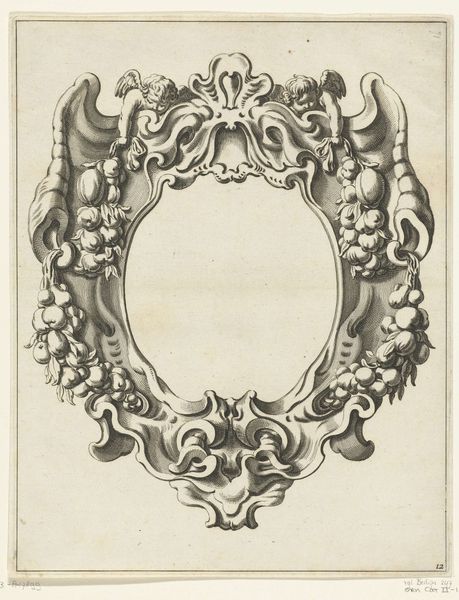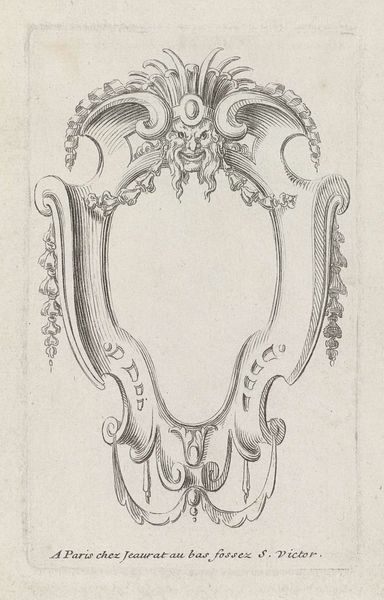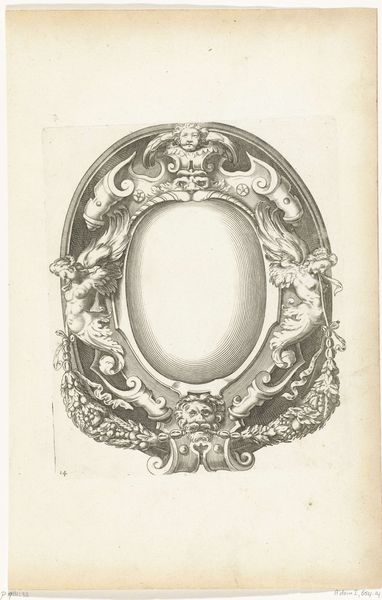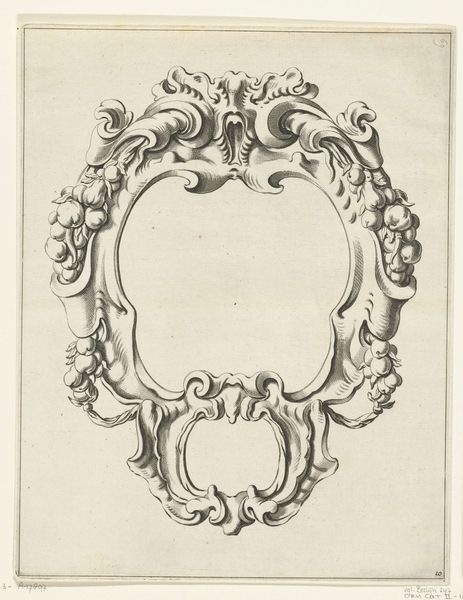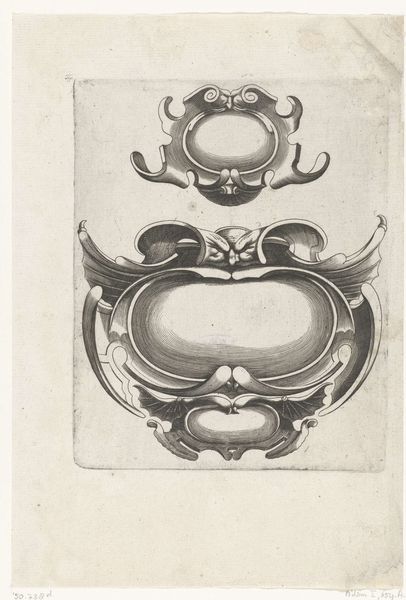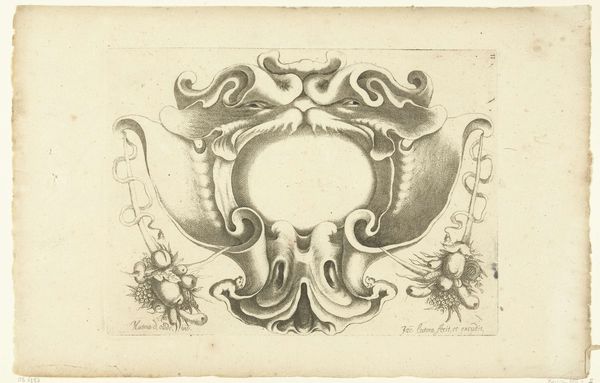
drawing, print, engraving
#
drawing
#
baroque
# print
#
old engraving style
#
form
#
geometric
#
line
#
engraving
Dimensions: height 223 mm, width 188 mm
Copyright: Rijks Museum: Open Domain
Jacob Lutma created this print, "Cartouche with Two Masks," in the Netherlands during the 17th century. But what exactly is a cartouche? And why does it feature masks? Cartouches, often seen in architectural and design contexts, were essentially ornamental frames or panels, frequently bearing inscriptions or heraldic symbols. They were visual markers of status and identity. The masks introduce another layer of meaning, alluding to classical theater and the performance of social roles. The Dutch Republic in Lutma’s time was a society grappling with new ideas about citizenship and public life. Prints like this, circulated widely, were not simply decorative. They offered a visual vocabulary for understanding the world. We might look to emblem books, architectural treatises, and even playbills of the period to understand how these images functioned in their time. The real meaning of art lies not just in the image itself, but in the swirling currents of social and institutional life that gave it shape.
Comments
No comments
Be the first to comment and join the conversation on the ultimate creative platform.
